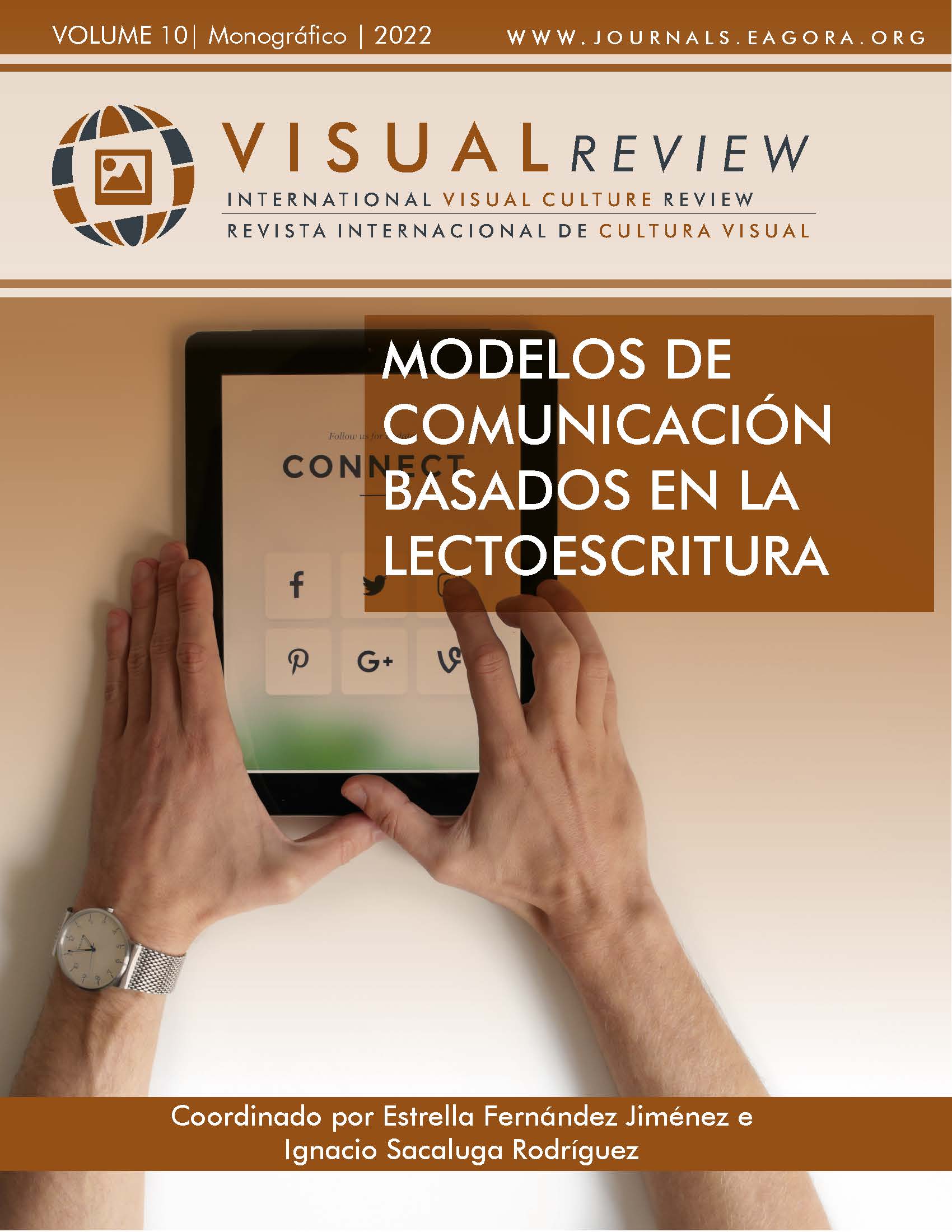Valores y contravalores de la cultura de paz en el fútbol español
Análisis de los entornos virtuales
DOI:
https://doi.org/10.37467/revvisual.v9.3607Palabras clave:
Fútbol, Educación, Violencia, Redes sociales, Juventud, Movimiento socialResumen
Los foros especializados en el fútbol se han convertido en espacios importantes de comunicación social entre sus seguidores. En este trabajo, analizaremos las interacciones entre aficionados al fútbol, con el fin de averiguar la manera en la que se manifiesta el discurso de odio en estos entornos virtuales. La metodología empleada ha sido de tipo cualitativa a través de la técnica de la etnografía virtual y el análisis discursivo del contenido de los foros españoles más importantes. Concluiremos que estos espacios suponen un caldo de cultivo adecuado para la difusión de mensajes de odio y otras manifestaciones antideportivas.
Descargas
Estadísticas globales ℹ️
|
592
Visualizaciones
|
496
Descargas
|
|
1088
Total
|
|
Citas
Amsami, A. (2019). When dissent by football fans on social media turns to hate: call for stricter measures. University of Maiduguri, nº 6 (1). http://irep.ntu.ac.uk/id/eprint/40742
Ballesteros-Herencia, C. (2021). La interacción con las redes sociales de los clubes españoles de fútbol. Index. Comunicación: Revista científica en el ámbito de la Comunicación Aplicada, 11, 11-13. https://bit.ly/2ZplnDl DOI: https://doi.org/10.33732/ixc/11/01Lainte
Bardin, L. (2002). El análisis de contenido. Madrid: Akal.
Barrio, G., Borges, E & García F. (2017) Vidas registradas. Redes sociales y jóvenes en la era algorítmica. Revista Telos: Cuadernos de comunicación e innovación, 107, 62-70. https://bit.ly/39tBhOH
Castillo de Mesa, J. (2018), Adopción y difusión de innovación social en las redes sociales virtuales. Comunitania: Revista internacional de trabajo social y ciencia social, 15, 197-217. https://bit.ly/3nYritb DOI: https://doi.org/10.5944/comunitania.15.10
Feixas, C & Ponce, C. (2019). Movimientos sociales, nuevas generaciones y el uso de tecnologías. Ediciones Universidad Católica Silva Henríquez, 24, 405-417. https://bit.ly/2W3dJgy DOI: https://doi.org/10.29344/07196458.24.1977
Gil, E. (2017). Nuevos activismos sociales en la era digital: de las masas al crowd. Política y sociedad, 54(1), 191-208.https://bit.ly/3uasjPV DOI: https://doi.org/10.5209/POSO.48914
Hidalgo, B. (2017). El impacto de las redes sociales como herramientas de comunicación, interacción y colaboración en el proceso enseñanza aprendizaje en la educación superior. Sathiri, 12(1), p. 104. https://doi.org/10.32645/13906925.56 DOI: https://doi.org/10.32645/13906925.56
Kilvington, D., & Price, J. (2019). Tackling social media abuse? Critically assessing English football’s response to online racism. Communication & Sports, 7(1), 64-79. https://doi.org/10.1177/2167479517745300 DOI: https://doi.org/10.1177/2167479517745300
M.E.C.D. (2018, Mayo). Anuario Estadísticas Deportivas 2018. Anuario de estadísticas deportivas 2018. https://bit.ly/2Znco5E
Macías, D., González, I., & Eslava, M. (2018). El fútbol como estrategia para el desarrollo de la inteligencia emocional del alumnado de educación primeria. Educaçao & Formaçao, 8(3), 17-36. https://doi.org/10.25053/redufor.v3i8.268 DOI: https://doi.org/10.25053/redufor.v3i8.268
Merino, A., Jaire, L., & Usán, P. (2019). Referentes formativos-deportivos en el fútbol base español. Un escenario socioeducativo complejo. Revista Educación Física y Ciencia, 21(2), 1-14. https://doi.org/10.24215/23142561e078 DOI: https://doi.org/10.24215/23142561e078
Nakayama, T. (2017). What’s next for whitenss and the Internet. Critical Studies in Media Comunication, 34(1), 68-72.https://bit.ly/3zAwfKO DOI: https://doi.org/10.1080/15295036.2016.1266684
Real Federación Española de Fútbol (2021). Memorias de actividades 2021-2022. https://bit.ly/3F2eeci
Rojas-Torrijos, J.L. (2017). El uso de las redes sociales en el deporte. Peridodismo deportivo de manual, pp 297-320.https://bit.ly/2XzoW93
Sáenz, A., Gimeno, F., Gutiérrez, H., & Lacambra, D. (2019). Evaluación del continuo deportividad-violencia en el fútbol base. Revista de Psicología del Deporte, 28(1), 33-40. https://bit.ly/3o45Zqp
Sevilla, U., Montoya, F., & Vílchez, A. (2020). Valores que se aplican en la práctica de futbol en el equipo de adolescentes del Instituto Nacional Francisco Luis Espinoza. Diploma thesis, Universidad Nacional autónoma de Nicaragua. https://repositorio.unan.edu.ni/13179/
Spaaij, R., & Schaillée, H. (2018). Unsanctioned agresión and violence in amateur sport: A multidisciplinary synthesis. Agression and violent behavior, 44, 36-46. https://bit.ly/2ZhbPtW DOI: https://doi.org/10.1016/j.avb.2018.11.007
Torres-Toukoumidis, Á., & Santis-Piras, D. A. (2020). Los morlacos y las redes sociales. Quito: Abya-Yala. DOI: https://doi.org/10.7476/9789978105771
Descargas
Publicado
Cómo citar
Número
Sección
Licencia
Los autores/as que publiquen en esta revista aceptan las siguientes condiciones:
- Los autores/as conservan los derechos de autor.
- Los autores/as ceden a la revista el derecho de la primera publicación. La revista también posee los derechos de edición.
- Todos los contenidos publicados se regulan mediante una Licencia Atribución/Reconocimiento-SinDerivados 4.0 Internacional. Acceda a la versión informativa y texto legal de la licencia. En virtud de ello, se permite a terceros utilizar lo publicado siempre que mencionen la autoría del trabajo y a la primera publicación en esta revista. Si transforma el material, no podrá distribuir el trabajo modificado.
- Los autores/as pueden realizar otros acuerdos contractuales independientes y adicionales para la distribución no exclusiva de la versión del artículo publicado en esta revista (p. ej., incluirlo en un repositorio institucional o publicarlo en un libro) siempre que indiquen claramente que el trabajo se publicó por primera vez en esta revista.
- Se permite y recomienda a los autores/as a publicar su trabajo en Internet (por ejemplo en páginas institucionales o personales), una vez publicado en la revista y citando a la misma ya que puede conducir a intercambios productivos y a una mayor y más rápida difusión del trabajo publicado (vea The Effect of Open Access).













